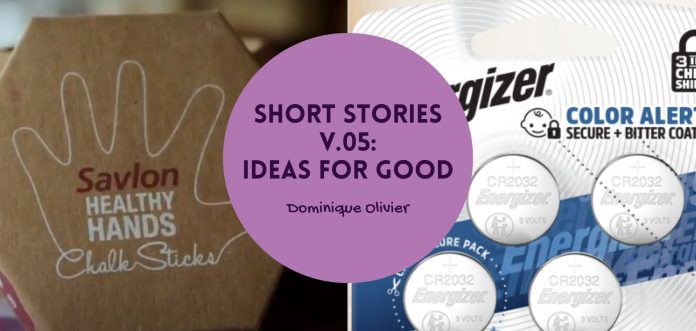Every so often, I come across a story that I think would work well for this audience, only to find that it is actually just too light to justify a full article. Never one to deny you informative (and interesting) content, I’ve decided to intersperse my usual long writing format with the occasional collection of short stories, tied together by a central thread but otherwise distinct from each other.
A few months ago, I wrote a collection of Short Stories about big-name businesses who were doing all sorts of shady things in order to make more money. In case you missed it, you can catch up here. Today’s article is essentially the opposite of that; an optimistic palette-cleanser highlighting how big brands are using their funds, power and influence to tackle real-world problems and make a real difference.
At their core, businesses exist to solve problems. Whether it’s providing consumers with a product or service, making life more convenient, or helping address gaps in the market, every business is in the business of offering solutions. But sometimes, in the rush for profit, it’s easy to forget that businesses also have the power to solve problems beyond the ones tied to their products. They can also address broader societal and environmental challenges – problems that affect the planet, communities, and future generations.
Savlon: soapy chalk
Handwashing with soap might seem like a simple, universal habit, but for many children in rural communities, it’s anything but routine. Soap is often considered a luxury, and the belief that water alone is enough to clean hands remains widespread.
The implications of this gap in hygiene are sobering. According to the World Health Organisation (WHO), India has the second-highest child mortality rate in South-East Asia for children under five, much of which is attributed to poor hygiene, sanitation, and environmental factors.
In many rural Indian schools, children rely on chalk and slates for their lessons. When lunchtime rolls around, they’re sent to wash their hands at communal taps. But soap isn’t always available, and even when it is, children often skip using it—simply rinsing off the chalk dust with water before drying their hands on their clothes.
Savlon, in collaboration with Ogilvy Mather India, saw an opportunity to tackle this issue in a way that was both practical and engaging. Enter Healthy Hands Chalk Sticks: chalk infused with powdered soap. The idea was ingenious. As children wrote with the chalk, a fine layer of soap powder coated their hands. When they washed up at lunchtime, the powder turned into soap upon contact with water, encouraging proper handwashing while also surprising and delighting the students, who loved watching the chalk dust transform into foam.
This wasn’t just a cute idea – it was meticulously developed. The chalk underwent rigorous safety testing to ensure it was completely safe for young hands. And when the initiative rolled out to over 100 schools, it became more than a classroom innovation – it sparked a nationwide conversation.
The campaign’s success caught the attention of the Food Safety and Standards Authority of India (FSSAI), which endorsed the initiative. It also led to a collaboration with Akshaya Patra, the world’s largest provider of midday meals. Together, they distributed soap-infused chalk to over a million children across India, embedding better hygiene habits in classrooms and homes alike.
Honda: vibrating shoes
In 2017, Honda launched IGNITION, an in-house initiative aimed at addressing social challenges by harnessing the creativity, technology, and design expertise of its employees. Since its inception, the program has delivered some impressive innovations, but one standout idea has left a particularly meaningful mark: Ashirase.
Ashirase is a navigation system designed to help visually impaired individuals walk safely and confidently. It’s a simple yet ingenious solution – a smartphone app pairs with a vibration device tucked into any pair of shoes. Inside the device is a motion sensor that works seamlessly with the app to guide users step-by-step.
Gentle vibrations inside the wearer’s shoes communicate directional cues. A buzz at the front of the foot signals the user to walk straight, while vibrations on the left or right indicate when to turn. This design lets users focus on their surroundings without needing to look at a screen or juggle additional tools, keeping their hands free for a cane and their ears open to ambient sounds.
But Ashirase is more than just a navigation aid – it’s about making the journey as stress-free as possible. Honda’s goal was to create a system that felt intuitive, almost second nature. By simplifying the process of navigation, Ashirase restores a sense of ease and natural flow to walking.
Originally planned for release by March 2023, Ashirase hit some delays during real-world testing. Instead of rushing to market, Honda took the opportunity to refine the device, incorporating valuable feedback from users to ensure the final product would be as effective as possible.
The good news? The wait is nearly over. With updates underway, Ashirase is now expected to make its official debut later this year, marking a significant step forward in accessible innovation.
Energizer: bitter batteries
Ask any parent and they’ll tell you: babyproofing a home is no joke. As babies grow, their combination of increased mobility and relentless curiosity means that parents are constantly scanning for potential hazards – especially the small objects that babies and toddlers are so magnetically drawn to put in their mouths.
Among the most dangerous household culprits are lithium coin batteries, commonly known as button batteries. These tiny power sources are commonly found in household items like remotes, clocks and even toys, and they can cause catastrophic damage if swallowed. Within hours, the acid in these batteries can burn through the esophagus, often with fatal consequences if left untreated. According to the Consumer Product Safety Commission (CPSC) tens of thousands of young children have been hospitalised over the course of the last decade due to button battery ingestion.
Energizer understood this problem and decided they didn’t want their products to be a contributing factor. Their solution? The 3-in-1 Shield battery.
These batteries look and function exactly like regular button batteries, but with three layers of childproofing built in. The first line of defense is child-resistant packaging which is impossible to open without a pair of scissors. The second layer takes a more sensory approach – a bitter coating on the batteries themselves. Made from bitrex, the world’s bitterest substance, the coating is completely non-toxic and offers a repulsive, bitter taste to encourage kids to spit the battery out. The third layer of protection is Energizer’s Color Alert technology. If the battery touches saliva, it releases a non-toxic dye that turns the child’s mouth bright blue almost instantly. This provides an immediate visual signal to caregivers to act fast and access emergency medical care.
As part of their campaign, Energizer partnered with Reese’s Purpose, a nonprofit dedicated to identifying and addressing child safety risks. Together, they’re working to raise awareness and advocate for change, hoping to protect more families from these preventable tragedies.
See it in action here:
Phillips: old stuff new
We all love receiving gifts, but not every present is a keeper – and that’s OK. Returns exist for a reason. However, what’s less obvious is the environmental impact of those returned items. Every year, around 10 million returned gifts are discarded instead of being resold or reused. Why? Because for many companies, it’s simply cheaper to produce new products than to process and reintroduce returns into the market. This wasteful practice contributes to an alarming amount of landfill waste, particularly following the festive season.
Philips decided this status quo wasn’t acceptable. Aware that their products are designed for durability and longevity, the company shifted its approach for the last holiday season. Instead of promoting new inventory, they chose to exclusively sell refurbished and returned products. These items were offered at lower prices and backed by upgraded warranties, ensuring that customers felt confident in their purchases.
To drive home the importance of this initiative, Philips also launched an augmented reality installation that illustrated the environmental cost of returns in real time. This visual representation highlighted just how significant the problem is and why solutions like theirs are urgently needed.
The results were significant. Philips sold out of their refurbished inventory and, in the process, diverted an estimated 185 tonnes of e-waste from landfills. The success of this campaign shows that consumers are open to sustainable shopping options when they’re presented as a viable and trustworthy alternative. As someone who’s supported the thrifting and repairing economies for years now, I can tell you that this comes as no surprise.
This move by Philips isn’t just a one-off success: it’s a blueprint for how businesses can rethink their approach to returns and waste. By proving that refurbished products can be just as valuable as new ones, Philips has set a precedent for industries looking to address the growing environmental challenges tied to overproduction and waste.
Renault: borrowed wheels
Living in a big city shouldn’t be a job requirement, but, unfortunately, too often, it is. This isn’t a problem that’s unique to South Africa. Take France, for instance: 40% of the population lives in areas without public transport, yet just 5% of commutes are possible without it for those outside city centres. And then there’s the reality that one in five job seekers can only find opportunities over 50 km from where they live, which leads to 54% of them dropping out of the job market due to mobility issues. It’s a real mess.
But Renault wasn’t about to let this problem go unnoticed. Realising that job markets in France can be brutal – especially when new employees face three-month trial periods where they can be let go at any time, and no access to loans to buy a car – Renault decided to step in. In a move that was tailor-made for the challenge, they offered 6,000 cars to those working these trial periods, letting them pay in instalments only once the job was permanent and the pay secured. The kicker? This was all rolled out through 50 dealerships strategically placed in areas with no easy access to mobility.
The result was nothing short of life-changing for many who would otherwise have been stuck, unable to reach work and forced to miss out on opportunities. Renault’s solution is a masterclass in building meaningful connections between brands and consumers, all while driving business forward.
About the author: Dominique Olivier

Dominique Olivier is the founder of human.writer, where she uses her love of storytelling and ideation to help brands solve problems.
She is a weekly columnist in Ghost Mail and collaborates with The Finance Ghost on Ghost Mail Weekender, a Sunday publication designed to help you be more interesting.
Dominique can be reached on LinkedIn here.





Great stories. Thanks